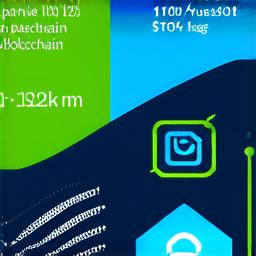Here’s the corrected HTML code for the article:
How is Blockchain Being Used Today? Exploring Real-World Applications and Case Studies
Blockchain technology has been rapidly evolving since its inception in 2008 with the launch of Bitcoin. It is a decentralized, secure and transparent digital ledger that enables secure peer-to-peer transactions without intermediaries. Today, blockchain is being used in various industries to solve complex problems, increase efficiency, and improve security. In this article, we will explore real-world applications and case studies of blockchain technology, including supply chain management, healthcare, finance, and more.
Supply Chain Management: A Real-World Application of Blockchain Technology
Blockchain technology has the potential to revolutionize supply chain management by increasing transparency, reducing costs, and improving efficiency. By creating a decentralized ledger, blockchain enables all parties involved in the supply chain to have access to real-time information about the location of goods, their origin, and their status. This makes it easier for companies to track products from production to delivery, reducing the risk of fraud, counterfeiting, and delays.
One example of a company using blockchain technology for supply chain management is Walmart. In 2018, Walmart launched its Food Traceability Initiative (FTI) to improve food safety by tracking the origin and movement of food products throughout the supply chain. The FTI uses blockchain technology to create a tamper-proof digital ledger that records the location, temperature, and other relevant data about food products. This enables Walmart to quickly identify the source of contamination in case of any food recalls or safety issues.

Healthcare: How Blockchain Technology is Transforming Healthcare Delivery
Blockchain technology has the potential to transform healthcare delivery by improving security, privacy, and interoperability. By creating a decentralized ledger, blockchain enables patients to have full control over their medical records, reducing the risk of identity theft and unauthorized access. It also makes it easier for healthcare providers to share patient data securely and efficiently, improving patient outcomes and reducing costs.
One example of a company using blockchain technology in healthcare is IBM Watson Health. IBM Watson Health uses blockchain technology to create a secure and interoperable digital ledger that records patient health data. This enables healthcare providers to have access to up-to-date patient information, improving diagnosis accuracy and reducing medical errors. IBM Watson Health’s blockchain platform also enables patients to have full control over their medical records, reducing the risk of identity theft and unauthorized access.
Finance: How Blockchain Technology is Disrupting the Financial Industry
Blockchain technology has the potential to disrupt the financial industry by enabling faster, more secure, and cheaper transactions. By creating a decentralized ledger, blockchain eliminates intermediaries, reducing transaction fees and increasing efficiency. It also makes it easier for companies to verify identities and perform due diligence, reducing the risk of fraud and money laundering.
One example of a company using blockchain technology in finance is Ripple. Ripple uses blockchain technology to create a global payment protocol that enables fast and low-cost cross-border payments. The Ripple platform allows financial institutions to send and receive payments in different currencies, reducing the risk of currency fluctuations and enabling faster settlement times.
Case Studies: Real-World Applications of Blockchain Technology
There are many real-world case studies of blockchain technology being used in various industries. Here are a few examples:
- Provenance: Provenance is a blockchain platform that enables companies to track the origin and movement of products throughout the supply chain. By using blockchain, Provenance creates a tamper-proof digital ledger that records the location, temperature, and other relevant data about products. This makes it easier for companies to track products from production to delivery, reducing the risk of fraud, counterfeiting, and delays.
- MediLedger: MediLedger is a blockchain-based platform that enables pharmaceutical companies to track drug distribution throughout the supply chain. By using blockchain, MediLedger creates a secure and interoperable digital ledger that records drug distribution data. This enables pharmaceutical companies to have access to up-to-date information about drug distribution, improving patient outcomes and reducing costs.
랑 3. Farm2Table: Farm2Table is a blockchain platform that enables farmers to sell their products directly to consumers. By using blockchain, Farm2Table creates a secure and transparent digital ledger that records the origin and movement of food products. This enables farmers to have full control over their products, reducing the risk of fraud and enabling consumers to have access to fresh, locally-sourced produce.Conclusion: The Future of Blockchain Technology
Blockchain technology is rapidly evolving and has the potential to transform various industries by increasing transparency, reducing costs, and improving efficiency. As we continue to see real-world applications of blockchain technology, it’s clear that this technology will play an increasingly important role in our lives. Whether it’s supply chain management, healthcare, finance, or any other industry, blockchain technology has the potential to revolutionize the way we do business.
